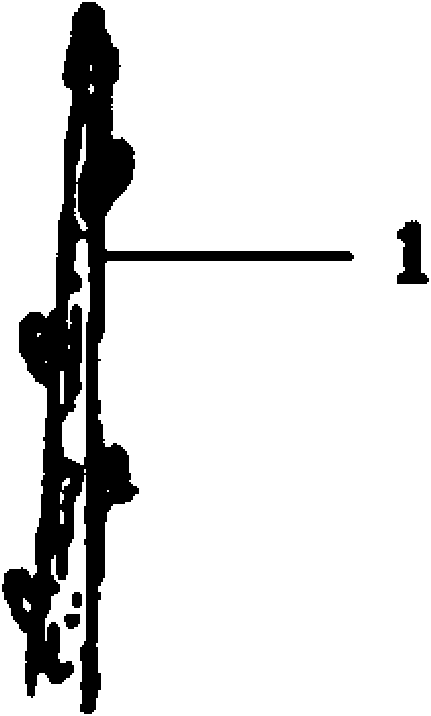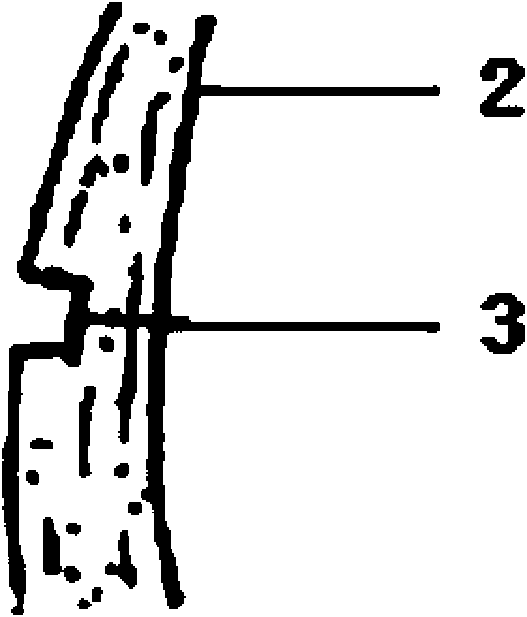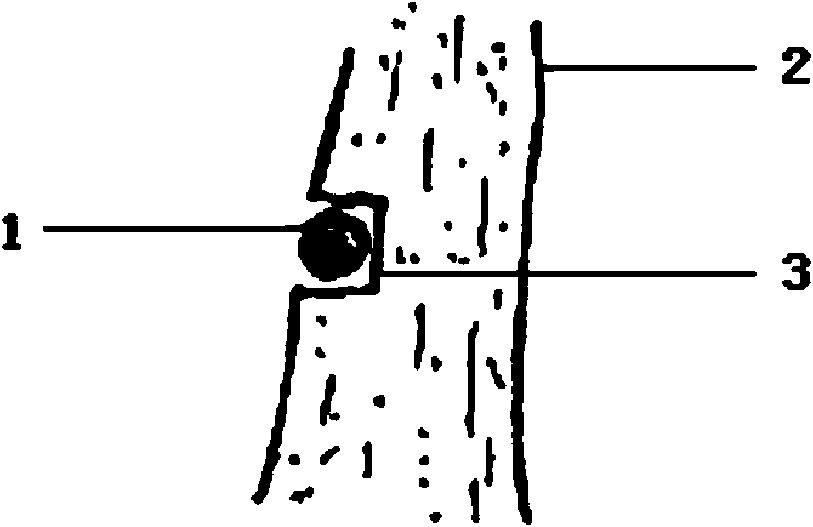Tree grafting method for scion without interface
A technology of trees, interfaces, applied in the field of plant grafting
- Summary
- Abstract
- Description
- Claims
- Application Information
AI Technical Summary
Problems solved by technology
Method used
Image
Examples
Embodiment 1
[0026] Embodiment one Kudingcha scion grafting without joint
[0027] 1. General situation There are 10 Kudingcha 7-year-old trees, and 15 scions of the same species are grafted.
[0028] 2. Grafting position Graft Kudingcha scion branches on the trunk and main branches of the same tree and adjacent different plants.
[0029] 3. Cutting the interface of the rootstock Cut a groove about 1.0cm deep and 0.8cm wide on the trunk or main branch of the rootstock (see figure 2 ).
[0030] 4. Spike anvil joint will figure 1 The scion shoots shown are inserted into the rootstock joint, snug to the bottom (see image 3 ). Tighten the interface joints with plastic film tape.
[0031] 5. Grafting season In March, before the sap flows.
[0032] 6. Healing survival After 3 to 6 months, the interface healed, and the healing survival rate reached 93.3%.
Embodiment 2
[0033] Embodiment 2 Grafting between camphor tree and mulberry tree
[0034] 1. General situation There are 5 camphor 6-year-old saplings and 5 mulberry seedlings.
[0035] 2. Grafting position Graft the rooted seedlings of the mulberry tree on the trunk of the lower part of the camphor tree.
[0036] 3. rootstock cutting is the same as embodiment one.
[0037] 4. The joining of ear and stock The joining of scion and rootstock is the same as embodiment one.
[0038] 5. Grafting season Tree dormancy season.
[0039] 6. Healed and survived After 3 to 6 months, 4 strains healed and survived.
PUM
| Property | Measurement | Unit |
|---|---|---|
| Diameter | aaaaa | aaaaa |
Abstract
Description
Claims
Application Information
 Login to View More
Login to View More - R&D
- Intellectual Property
- Life Sciences
- Materials
- Tech Scout
- Unparalleled Data Quality
- Higher Quality Content
- 60% Fewer Hallucinations
Browse by: Latest US Patents, China's latest patents, Technical Efficacy Thesaurus, Application Domain, Technology Topic, Popular Technical Reports.
© 2025 PatSnap. All rights reserved.Legal|Privacy policy|Modern Slavery Act Transparency Statement|Sitemap|About US| Contact US: help@patsnap.com



